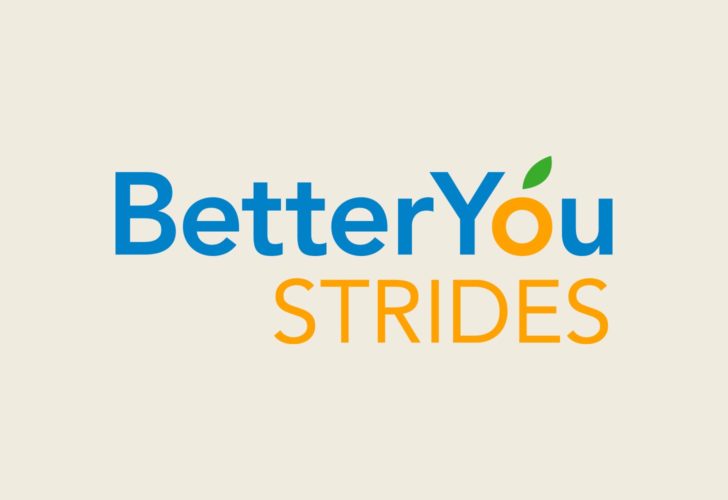Your Always Up-to-Date Health Insurance Terms Guide
By The Bailey Group Marketing
Published March 29, 2018

It can be frustratingly difficult to learn a new language. To this day I still have nightmares about standing in front of my Spanish 1 class having to recite verb conjugations.
Health insurance can feel that way too.
Luckily, learning how to “speak” health insurance isn’t as complicated as learning Spanish. By gaining a solid understanding of what some of the key terms mean, it can really take you a long way towards understanding how the world of healthcare works.
This post contains about 60 of the most important health insurance terms, organized by letter. Feel free to bookmark this page as we’ll be keeping it up-to-date as things change and new terms are added to the healthcare landscape.
A
Advance Premium Tax Credit – A new tax credit provided by the Affordable Care Act to help you afford health coverage purchased through the Marketplace. Advance payments of the tax credit can be used right away to lower your monthly premium costs. If you qualify, you may choose how much advance credit to apply to your premiums each month, up to a maximum amount. If your advance payments for the year are less than the credit you’re due, you’ll get the difference as a refundable credit when you file your federal income tax return. If your advance payments are more than the amount of your credit, you must repay the excess with your tax return. Also called premium tax credit. (Resource: More details at Healthcare.gov)
Affordable Care Act (ACA) – The comprehensive health care reform law enacted in March 2010. The law was enacted in two parts: The Patient Protection and Affordable Care Act was signed into law on March 23, 2010, and was amended by the Health Care and Education Reconciliation Act on March 30, 2010. The name “Affordable Care Act” is used to refer to the final, amended version of the law.
Ambulatory Care – Health care services that do not require a hospital stay, such as those provided in a doctor’s office, clinic or day surgery center.
Annual Limit – A cap on the benefits your insurance company will pay in a year while you’re enrolled in a particular health insurance plan. These caps are sometimes placed on particular services, such as prescriptions or hospitalizations. Annual limits may be placed on the dollar amount of covered services or on the number of visits that will be covered for a particular service. After an annual limit is reached, you must pay all associated health care costs for the rest of the year.
B
Brand-name Drugs – Prescription drugs sold by a drug company under a specific name or trademark and protected by a patent. Brand-name drugs may be available by prescription or over the counter. (Resource: Generic drug facts from the FDA)
Broker – This is what we are – an independent insurance agent who works with many insurance companies to find insurance policies for their clients.
C
Cafeteria Plans – Benefit programs that help employees pay for certain expenses, such as life insurance, disability benefits, medical expenses and child care, with pre-tax dollars. Employers select the benefits that will be offered (only certain benefits can be provided), and employees use pre-tax dollars to buy the benefits they want. Employers can also make contributions to subsidize benefits. Cafeteria plans are also known as flexible benefit plans or IRS 125 Plans.
Children’s Health Insurance Program (CHIP)– A government insurance program jointly funded by state and federal government that provides health coverage to low-income children and, in some states, pregnant women in families that earn too much income to qualify for Medicaid but can’t afford to purchase private health insurance coverage.
Claim – A request by an individual (or the provider) for the insurance company to pay for services rendered.
Consolidated Omnibus Budget Reconciliation Act (COBRA) – A federal law that may allow you to temporarily keep health coverage after your employment ends, you lose coverage as a dependent of the covered employee, or another qualifying event.
Coinsurance – The money that an individual is required to pay for services after the deductible has been met. It is often a specified percentage of the charges. For example, the employee pays 20 percent of the charges while the health plan pays 80 percent.
Copayment – An arrangement where an individual pays a specified amount for various health care services and the health plan or insurance company pays the remainder. The individual must usually pay his or her share when services are rendered. Copayments are usually a set dollar amount (such as $20 per office visit), rather than a percentage of the charges.
D
Deductible – A set dollar amount that a person must pay before insurance coverage for medical expenses can begin. They are usually charged on an annual basis.
Dental Insurance – Insurance that helps pay for dental care and usually includes regular checkups, cleanings, X-rays and certain services required to promote general dental health. Some plans will provide broader coverage than others, and some will require a greater financial contribution from you when services are rendered. Some plans may also provide coverage for certain types of oral surgery, dental implants or orthodontia.
Dependent – Any individual, adult or minor whom a parent, relative or other person may choose to cover on his or her insurance plan.
E
Employee Assistance Program (EAP) – Mental health counseling services that are sometimes offered by insurance companies or employers. Typically, individuals or employers do not have to pay directly for EAP services provided.
Essential Health Benefits – A set of health care service categories that must be covered by certain plans. (Resource: See the essential health benefits covered by Marketplace plans)
Exclusions and Limitations – Specific conditions or circumstances for which an insurance policy or plan will not provide coverage (exclusions), or for which coverage is specifically limited (limitations).
Exclusive Provider Organization (EPO) – Health care plans similar to preferred provider organizations (PPOs), with the main difference being that services are covered only if you go to doctors, specialists or hospitals in the plan’s network, although there are exceptions for emergencies.
F
Fee-for-service Plans (FFS) – A type of coverage where insurers pay for health care services provided to plan participants. With this type of coverage, you can choose any doctor you wish and change doctors any time or go to any hospital in any part of the country. These plans existed primarily before the rise of HMOs and PPOs.
Flexible Spending Account (FSA) – An individual arrangement set up through employers to pay for many of out-of-pocket medical expenses with tax-free dollars. The FSA account holder sets aside a pre-tax dollar amount for the year which he or she can use to pay medical expenses. Unused FSA funds can expire, depending on the policy of the account holder’s employer. (Video: Introduction to FSAs)
G
Generic Drugs – A prescription drug that has the same active-ingredient formula as a brand-name drug. Generic drugs usually cost less than brand-name drugs. The Food and Drug Administration (FDA) rates these drugs to be as safe and effective as brand-name drugs.
H
Health Maintenance Organization (HMO) – An HMO is a network of health care plans in which individuals pay a small monthly fee to be a member of the HMO, as well as small fees or copayments for specified health care services. Services are provided by physicians and allied health care personnel who are employed by or under contract with the HMO. HMOs are available to both individuals and employer groups.
High-deductible Health Plan (HDHP) – A plan that features higher deductibles than traditional insurance plans. HDHPs can be combined with an HSA or an HRA to allow you to pay for qualified out-of-pocket medical expenses on a pre-tax basis. (Video: What You Need to Know When Switching to a HDHP)
I
Individual Mandate – The ACA requirement that most individuals obtain acceptable health insurance coverage for themselves and their family members or pay a penalty. (Video: Introduction to the Individual Mandate)
In-network – Typically refers to physicians, hospitals or other health care providers who contract with an insurance plan (usually an HMO or PPO) to provide services to its members. Coverage for services received from in-network providers will typically be greater than for services received from out-of-network providers, depending on the plan. (Video: Save Time and Money When You Choose an In-network Provider | Resource: Florida Blue Provider Directory)
L
Lifetime Limit – A cap on the total lifetime benefits you may get from your insurance company. An insurance company may impose a total lifetime dollar limit on benefits or limits on specific benefits, or a combination of the two. After a lifetime limit is reached, the insurance plan will no longer pay for covered services.
Long-term Care Insurance – Insurance policies that cover the costs of providing nursing care, home health care services and custodial care for the aged and infirm. (Video: Long-term Care Insurance 101)
M
Managed Care – A system of health care delivery that is characterized by arrangements with selected providers, ongoing quality control and utilization review programs, and financial incentives for members to use providers and procedures covered by the plan.
Maximum Benefit – The maximum dollar amount that an insurance company will pay for claims, either for a specific procedure or service or during a specified period of time.
Medicaid– A state-administered health insurance program for low-income families and children, pregnant women, the elderly, people with disabilities, and, in some states, other adults. The federal government provides a portion of the funding for Medicaid and sets guidelines for the program. States also have choices in how they design their programs, so Medicaid varies state by state and may have a different name in your state.
Medicare – A federal health insurance program for people who are age 65 or older and for certain younger people with disabilities. It also covers people with End-stage Renal Disease (ERSD)—permanent kidney failure requiring dialysis or a transplant.
Medicare Part D – A program that helps pay for prescription drugs for people with Medicare who join a plan that includes Medicare prescription drug coverage. There are two ways to get Medicare prescription drug coverage: through a Medicare Prescription Drug Plan or a Medicare Advantage Plan that includes drug coverage. These plans are offered by insurance companies and other private companies approved by Medicare.
Minimum Essential Coverage– The type of coverage an individual needs to have to meet the individual responsibility requirement under the ACA. This includes individual market policies, job-based coverage, Medicare, Medicaid, CHIP, TRICARE and certain other coverage.
O
Open Enrollment Period – A period of time, usually but not always occurring once per year, when employees of companies and organizations may make changes to their health insurance and other benefit options. The term also applies to the annual period in which individuals may buy health insurance plans through the Marketplace. (Video: Take Charge of Your Open Enrollment)
Out-of-network – Typically refers to physicians, hospitals or other health care providers who do not contract with an insurance plan to provide services to its members. Depending on the insurance plan, expenses incurred for services provided by out-of-network providers might not be covered, or coverage may be less than for in-network providers. (Resource: Florida Blue Provider Directory)
Out-of-pocket Maximum (OOPM) – The total amount paid each year by the member for the deductible, coinsurance, copayments and other health care expenses, excluding the premium. After reaching the out-of-pocket maximum, the plan pays 100 percent of the allowable charges for covered services the rest of that calendar year.
P
Pre-existing Condition – Any medical condition that was diagnosed or treated within a specified period immediately before a health insurance policy became effective. These conditions may not be covered for a specified period of time under the new policy. The Affordable Care Act did away with pre-existing conditions in 2010. (Resource: More details about coverage for pre-existing conditions from Healthcare.gov)
Preferred Provider Organization (PPO) – A type of managed care plan in which health care providers and insurers agree to offer substantially discounted fees for covered health care services and to lower copays and deductibles for in-network services. The plan’s payment ratio (what your insurance company pays compared to what you pay) may be high—for example, it could be 90/10, with the insurance company paying 90 percent of medical costs and you paying 10 percent after the copay and deductible.
Premium – The amount of money charged by an insurance company for coverage. (Video: Introduction to Insurance Payments)
Prescription Insurance – Insurance that helps pay for prescription drugs and medications. Prescription insurance is often offered as part a larger health insurance plan, though this is not always the case. Stand-alone individual prescription insurance may be available for people who are not offered prescription drug coverage or who have no health insurance. Eligibility for specific medications and the cost of insurance varies among health plans. Also known as drug coverage.
Preventive Care – Any medical checkup, test, immunization, or counseling service used to prevent chronic illnesses from occurring. (Video: Preventive Care 101)
Primary Care Physician (PCP) – A health care professional who is responsible for monitoring an individual’s overall health care needs. Typically, a PCP serves as a gatekeeper for an individual’s medical care, referring him or her to specialists and admitting him or her to hospitals when needed.
Q
Qualified Health Plan (QHP) – An insurance plan that is certified by the Health Insurance Marketplace, provides essential health benefits, follows established limits on cost-sharing (like deductibles, copayments and out-of-pocket maximum amounts), and meets other requirements. A qualified health plan will have a certification by each Marketplace in which it is sold.
Qualified Medical Expense – The costs attached to the diagnosis, cure, mitigation, treatment or prevention of disease, or for the purpose of affecting any structure or function of the body.
R
Reasonable and Customary Charges – The commonly charged or prevailing fees for health services within a geographic area. If charges are higher than what an insurance carrier considers reasonable and customary, the carrier will not pay the full amount and instead will pay what is deemed appropriate for the particular service. The remaining charges are the responsibility of the patient. (Resource: Deep dive on this topic on HowStuffWorks)
S
Self-insured – A health benefits plan in which the employer is responsible for the cost of its employees’ health care. Typically, a third party provides administrative services for the plan to the employer group. If you work at a larger company or organization, chances are your under a self-insured plan. (Resource: What it Means to “Self-Fund” Your Employee Benefits Plan)
Summary of Benefits and Coverage (SBC) – An outline of a health insurance plan that allows somebody to evaluate costs and coverage and compare against other health plans. (Resource: What an SBC looks like)
T
TRICARE – A health care program for active-duty and retired uniformed services members and their families.
V
Vision Insurance – Insurance that covers specific eye care benefits defined in the policy. Vision insurance policies typically cover routine eye exams and other procedures, and provide specified dollar amounts or discounts for the purchase of eyeglasses and contact lenses. Some vision insurance policies also offer discounts on refractive surgery.
W
Waiting Period – A period of time in which your health plan does not provide coverage for a particular pre-existing condition. This is common on dental plans. (Resource: How Dental Insurance Waiting Periods Work)
Wellness Program – A program intended to improve and promote health and fitness, usually offered through the workplace, although insurance plans can offer them directly to their enrollees. The program allows your employer or plan to offer you premium discounts, cash rewards, gym memberships and other incentives to participate. Some examples of wellness programs include programs to help you stop smoking, diabetes management programs, weight loss programs and preventive health screenings. (Shameless plug: We create best-in-class wellness programs for companies large and small)




